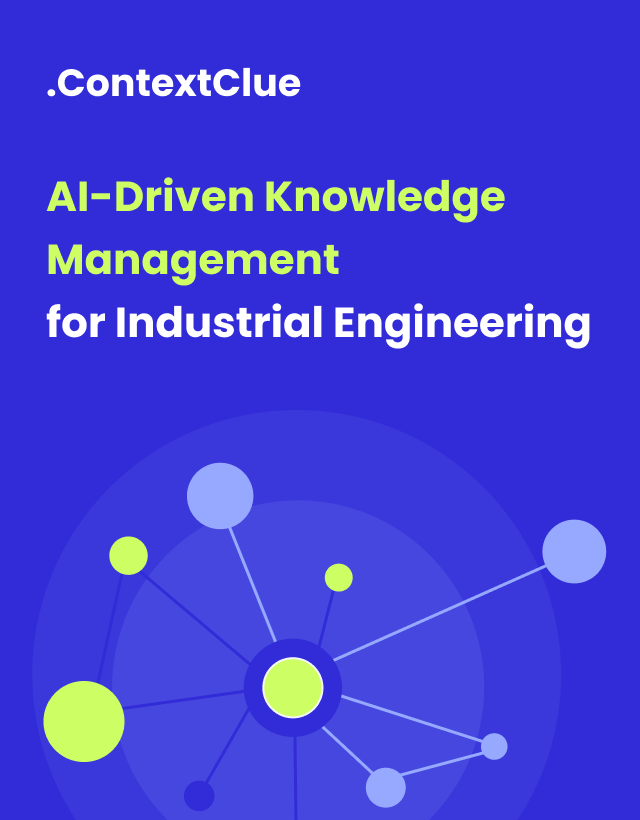
February 17, 2025
What Is LangChain? Definition and Key Elements
Author:

CSO & Co-Founder
Reading time:
6 minutes
LangChain is an open-source framework that is revolutionizing the way we interact with language models. It allows developers to link large language models like GPT-3.5 to a variety of external data sources, providing a powerful tool for building intelligent and informative applications.
Key Takeaways
- LangChain is an open-source framework designed to streamline the development of applications powered by large language models (LLMs).
- It enables developers to connect LLMs to external data sources, enhancing the capabilities of natural language processing applications.
- Key components of LangChain include prompt templates, indexes, retrievers, and output parsers, which collectively facilitate efficient and dynamic AI-driven solutions.
LangChain revolutionizes AI application development by seamlessly integrating large language models with diverse data sources, enabling dynamic and context-aware solutions.
What is LangChain?
LangChain is an open-source framework that simplifies the creation of applications utilizing large language models. It allows developers to link models like GPT-3.5 to various external data sources, enhancing the functionality of natural language processing applications.
By providing a suite of tools and abstractions, LangChain streamlines the development process, making it accessible to developers proficient in Python, TypeScript, or JavaScript.

Read also more about LangChain Vs. LlamaIndex: Main Differences

Key Components of LangChain
- Prompt Templates: These are predefined formats that structure user inputs, ensuring that language models receive contextually relevant prompts for accurate responses.
- Indexes: Structures that store and organize data, enabling efficient retrieval of information relevant to user queries.
- Retrievers: Algorithms designed to search indexes and fetch pertinent information, enhancing the responsiveness of AI applications.
- Output Parsers: Tools that format and refine the outputs generated by language models, ensuring clarity and usability for end-users.
How LangChain Works
LangChain operates by ‘chaining’ together its components to create a cohesive workflow. Each component, or ‘link,’ performs a specific function—such as formatting input, accessing data, or processing output. These links are connected sequentially, allowing the system to handle complex tasks by breaking them down into manageable steps. This modular approach offers flexibility, enabling developers to customize workflows according to specific application requirements.
LangChain Use Cases and Integration Capabilities
LangChain’s versatility makes it suitable for a wide range of applications, including:
- Chatbots: Developing interactive agents capable of maintaining contextually relevant conversations.
- Document Summarization: Condensing large volumes of text into concise summaries.
- Code Generation: Assisting in writing and debugging code snippets across various programming languages.
- Data Retrieval: Accessing and extracting information from extensive datasets or databases.
LangChain integrates seamlessly with platforms like Amazon Web Services, Google Cloud, and Microsoft Azure, as well as various APIs and data storage solutions. This compatibility ensures that developers can incorporate LangChain into existing infrastructures with minimal friction, leveraging its capabilities to enhance their AI-driven applications.
Why use LangChain?
LangChain enhances AI application development by providing structured workflows, modular components, and seamless integrations. Here’s why developers and businesses should use it:
- Simplifies AI Development – LangChain abstracts complex processes, allowing developers to focus on functionality rather than implementation details.
- Enhances Context Awareness – By connecting LLMs to external data sources, LangChain enables AI to provide more accurate and contextually relevant responses.
- Supports Multiple Integrations – Works with databases, APIs, and cloud services like AWS, Google Cloud, and Azure, ensuring flexibility in deployment.
- Improves Efficiency – Pre-built tools such as retrievers, prompt templates, and output parsers streamline the development process, reducing time-to-market.
- Scalability & Customization – Its modular architecture allows businesses to scale AI applications efficiently and tailor solutions to their specific needs.
By using LangChain, organizations can build powerful AI-driven applications that are dynamic, efficient, and capable of handling real-world complexities.

For further information on LangChain and its advantages,
reach out to Generative AI development company.

LangChain stands out as a powerful tool for developers aiming to advance beyond traditional language models. Its comprehensive framework not only simplifies the integration of large language models with external data sources but also provides the necessary components to build dynamic, context-aware applications. By adopting LangChain, developers can unlock new potentials in AI application development, leading to more responsive and intelligent solutions.
FAQ: LangChain Fundamentals and Applications
Is LangChain open source?
Yes. LangChain is a fully open source framework, available for use and extension under a permissive license. Its repository is accessible on GitHub and widely supported by a vibrant developer community.
How to install LangChain?
LangChain can be installed by using the standard package management tools provided for your preferred programming language. For Python, you would use the common Python package installer, and for JavaScript/Node.js, you would use the relevant package manager for that ecosystem. The official LangChain documentation provides step-by-step instructions for both environments, making it accessible for developers to set up and begin building applications quickly.
How to create a local LangChain vector database?
To create a local vector database:
-
Use supported libraries like Chroma DB or FAISS (both open source) locally.
-
Store document embeddings (vectors) using LangChain’s vector store abstractions and integrate via the framework’s APIs.
-
The local database enables fast, private, RAG-like knowledge retrieval within your own infrastructure, no external hosting required.
What are the main components of LangChain?
-
LLMs: APIs to connect with any foundational model (OpenAI, Anthropic, Mosaic, HuggingFace, etc.).
-
Document loaders: Ingest content (PDFs, text, websites).
-
Text Splitters: Parse large documents into manageable pieces.
-
Embeddings/Vector stores: Interface with vector databases for semantic search.
-
Chains: Sequences of composable LLM calls and transformations.
-
Agents and Tools: Allow LLMs to choose and call functions, APIs, or plugins dynamically.
-
Memory modules: Persist conversation context or state.
-
Retrievers: Connect vector stores/documents to the agent/chat flow.
-
Output parsers/formatters: Control and post-process how LLM results are returned.
What are the main differences between LangChain and LangGraph?
-
LangChain focuses on ease of connecting multiple LLM operations, chaining, and tool/function orchestration for agentic AI in a mostly linear flow.
-
LangGraph is a newer, open source framework inspired by LangChain, optimized for multi-agent/graph-based workflows. It allows developers to design and orchestrate complex scenarios where multiple agents (each with unique roles or expertise) can interact, specialize, and collaborate within a single solution.
What are some real-world applications of LangChain?
-
Conversational AI agents – contextual chatbots, customer support bots, legal/medical advisors.
-
Retrieval-Augmented Generation (RAG) – enabling LLMs to fetch up-to-date or proprietary knowledge from databases and documents.
-
Knowledge assistants – internal tools to surface business documents, HR info, or codebase understanding.
-
Automated data extraction – parsing contracts, PDFs, or emails for structured insights.
-
Intelligent workflow automation – LLM-driven data pipelines, summarization services, API interaction, or decision loops
Category:






